There’s a glimpse behind the trees, and a slight hum. Then it’s gone again. You would suppose that a 12-car, 240-metre Class 700 dual-voltage electric multiple unit would be hard to miss. But not at Wildenrath, close to the Dutch border in northwest Germany - here, surrounded by trees, is where the ‘700’ is carrying out its testing before coming to the UK.
The tale of getting the Thameslink trains ordered has been a long one. It involved the National Audit Office criticising the Government’s procurement process, and major political controversy when Siemens beat Bombardier to be named preferred bidder to the deal in 2011. But now, finally, the trains are being built and are due to enter traffic next year.
Ironically, Bombardier Class 387s are being used as an interim fleet on Thameslink until the ‘700s’ start arriving. The ‘387s’ were built in 2014-2015, and once the TL fleet arrives they will move to First Great Western. It is one big jigsaw puzzle.
The Class 700s are the second generation of the successful Desiro platform, and the first of the Desiro City UK trains to be delivered to the UK. A second order, for Class 707s for South West Trains, will begin construction in June.
Siemens is building the ‘700s’ in nearby Krefeld, a city of 250,000 inhabitants that is twinned with (among other cities) Leicester.
Its manufacturing plant is closing in on a century of production, and was the birthplace of the Class 185 diesel multiple units used by TransPennine Express, and of the Class 350/1 and 350/2 EMUs for London Midland (some vehicles were built in Prague). The Abellio Greater Anglia Class 360/1s were also mostly built here, although some vehicles were manufactured at Vienna in a similar process to the SWT Class 444s and 450s.
Also built entirely at Krefeld were the LM Class 350/3s, the TPE Class 350/4s, ScotRail Class 380s. And it’s here that SWT’s ‘707s’ will be built, as well as Eurostar Class 374 e320s.
Speaking at Krefeld on April 2, Siemens Rail Systems UK Managing Director Steve Scrimshaw said: “We are sat at 1,600 vehicles in the UK. By 2018, if we win no other contracts, we’d have 3,300 vehicles. Our attitude is delivery, delivery, delivery.”
He explains that in the UK, Siemens’ revenue was £5 billion last year, and that the company here employs 14,000 people: “The ‘700s’ are a step change. We need to upscale.”
The trains - 60 eight-car ‘700/0s’ and 55 12-car ‘700/1s’ - will start arriving in the UK in August this year, with the last due to be delivered in June 2018.
The delivery plan will, by the end of the year, entail one train per week arriving in the UK. According to Govia Thameslink Railway, the order of delivery will be: 11 x 12-car units, 6 x 8-car units, 4 x 12-car units, 40 x 8-car units, 30 x 12-car units, 12 x 8-car units, 10 x 12-car units, and 2 x 8-car units. First to arrive should be 700107, which is the first of the non pre-series trains.
The first six at Wildenrath (700101-700106) are pre-series trains and are being used for additional testing. Already 700101 has accumulated more than 15,000 miles of testing - it has visited the Velim test track in Czech Republic, and to Vienna for temperature testing.
The trains are owned by Cross London Trains (XLT) a consortium comprising Siemens Project Ventures GmbH, Innisfree Limited and 3i infrastructure plc. Eversholt Rail has a long-term agreement with Cross London Trains to provide project and asset management services.
XLT Executive Chairman Andy Pitt, speaking in Krefeld on April 2, said: “The ‘700s’ will bring much-needed additional capacity into the system, but in an environmentally friendly way. And that’s because the trains are lighter and far more energy-efficient than previous generation trains. So that’s an advantage obviously to the passenger and also the train operator - the fact that they’re environmentally friendly and as good on track wear.
“They are very accessible and fully compliant with the latest disability regulations. This means that all passengers can use them, and that includes passengers with wheelchairs, bikes, buggies and luggage. So that is also a big benefit.
“There are also new features, including a very striking passenger information screen that enables real-time and passenger information to be projected, and facilities like self-adjusting air conditioning.
“Looking at it from an owner’s perspective, it’s very important that a train is capable of being easily adapted over the life of the asset, because market circumstances do change. I think you’ll see that the Class 700 is a very modular design, and that modular design will help the train adapt. It will make it easier to maintain and keep clean as well.”
Pitt is former managing director of SWT, where Siemens delivered 45 five-car Class 444s and 127 four-car Class 450s. He says: “Build quality and reliability are both extremely important for an owner, and I know from personal experience that Siemens has a good track record on both of those issues, when you look at the Desiro UK fleets.
“The Class 700 train has also had an awful lot of input from the train operator, which is good - an operational, customer-facing and engineering issue.
“It’s already building on a very successful Desiro UK platform, and has been subject to an awful lot of internal and external scrutiny. I think you’ll see that there has been a huge attention to detail on this train, which is impressive.
“So I’m very confident that the Class 700 train will have a good long-term future, and I’m really looking forward to the time that we can actually get them into passenger service in the UK.”
Iain Smith, Thameslink Programme Director, Siemens Rail Systems UK, was also in Krefeld. He spoke of how the trains will be used on the Thameslink network - from 2018, 24 trains per hour will run through the Central Core between St Pancras International and Blackfriars.
“It really is quite impressive - 24 trains an hour north to south, and 24 trains an hour east to west. It’s going to make a big difference. It obviously affects the Underground - the Underground is going to be overloaded in certain places, and it’s helping move passengers away from St Pancras and out into London quickly. And it’s reducing the interchange needs between the main line terminals, so people can do more journeys across London without having to keep changing trains all the time.”
Smith discusses the depots that will house the ‘700s’: “Hornsey is a depot which is very difficult to stage. Like open heart surgery, we have to keep the patient alive while we’re ripping them to pieces and putting them back together again. So we had a series of stages at Hornsey that was very critical to get right.
“We had two or three of those last year. Our big project at Christmas this year was a major remodelling in the south end of Hornsey depot. It was one of those lifetime opportunities - a 90-hour possession available last Christmas, and we had the railway part, the south end of Hornsey depot. And before you ask, we had nothing to with East Coast at Christmas!”
The Hornsey work is due to be completed in July 2016. Meanwhile, in July this year, Three Bridges depot will be completed, “ready to receive the first train, which arrives at the beginning of August, and start its UK-side programme”.
Smith adds: “In December 2015, we expect to give GTR its first train, to hand it over ready for operational use. February 2016 is when GTR first intends to run a significant passenger service with that train.”
Regarding the ‘700s’, he says: “Designs have been completed ahead of time, manufacturing is ahead of or as per programme, and all key dates have basically been met so far on the programme. Currently we have six full-length units, so that’s six four-car units in testing. The seventh is due this month, and we have one reduced-length unit, an eight-car that is also at Wildenrath for the test unit involved in car-specific issues.”
Behind Smith are where the trains are being built, and the line on which trains are hauled from the factory for testing and delivery to their various destinations. It is not just the UK for which the factory builds trains - trains for Germany and Turkey are also currently under construction.
Says Smith: “We’re now at the stage where we have another 200 body shells being manufactured - 20% of the body shells have already been produced in the factory here. Wildenrath’s all ready for the next stage.
“There is a big ramp-up of production to get to where we need, the two vehicles per day that starts in September. That is where we really start to wind up the process.”
He talks specifically of 700101: “This train went through climatic testing in the early part of last year - in the Vienna fridge/oven, depending which way it’s turned at the time. It was quite an extensive series of tests. We threw snow at it; we froze it; we put ice in the doors. Every element and every system was tested. In fact, the air-conditioning was tested with extreme temperatures. We tested the airflows around the various areas where the grilles are going to get blocked up.
“Some changes were done as a result, in terms of improving its performance in extreme conditions. So while you could go never go entirely against every scenario, we’ve done everything that we reasonably can.”
Smith also discusses how the trains will be able to operate through the Central London Core. To reach 24tph, Automatic Train Operation (ATO) will be used. Further out, a Driver Advisory System (DAS) will be used to allow Network Rail to guide drivers.
“The Central Core will be controlled by ATO, which we’ve already tested here. Within 20 minutes of the Core, the Core sector flight control is very much embedded into this, so that trains present at the right point at the right junctions at the right time, so we get the smoothest possible flow of those 24 trains an hour. That is built on a Driver Advisory System - Network Rail will basically be telling the driver, through the driver system, what they will be driving through.
“Outside that, trains are being supervised by Network Rail’s train management system, to identify what the driver needs to be doing across the Core. So it’s not a novel way of doing this, but it’s an essential way to get those 24 trains an hour from the centre, to be able to guide them to the right paths, rather than have them start when you get to the junctions.
“That does need a simulator to get all this to work, in theory. We have provided the train-based kit, which basically mimics the train and signals rail information across the kit. And a lot of work is being done to mimic this pattern to try and restart that, before we get to the test station in Hertford North.”
Sabri Esslimani, Siemens AG head of assembly at Krefeld Manufacturing Facility, tells RAIL about the factory. “It is 253,190m2 and has approximately 2,500 staff. Approximately 600 cars per year leave the factory.” He says 150 apprentices are based there, and that quality control is key - Esslimani is constantly on the lookout for improvements.
He explains that construction of the SWT Class 707s begins in June. The work starts with the small parts and front ends, and then the large components are added, such as the car body. There is also sand blasting and painting. Each stage of the process (there are five in total) has a Quality Gate.
In the pre-assembly area, the windows, toilets, HVAC and couplers, as well as wiring, are among the components added. By this point the ‘700’ vehicle has already had its metal pressed, and the vehicle is then welded together in ‘The Cathedral’, which adds the roof to the bodyside and floor. Bogie fitting is carried out at the third stage, and then comes the electrical testing. Because of the scale of the Thameslink project, Esslimani says that has been integrated with the assembly stage.
He says the pre-assemble to delivery is 14 days for an entire train. When the “big ramp-up” (as Smith calls it) begins in September, two vehicles per day will be constructed. That will then rise to three, with one destined for SWT. “I have capacity for 60 bodyshells per month, and I have five production lines,” says Esslimani.
On the day of RAIL’s visit to Krefeld, four vehicles from 700107 were being shunted prior to delivery to Wildenrath, while an eight-car train was being constructed.
This is the 13th train to be built, and will be the second eight-car delivered (making it probably 700002). Esslimani says that it will be at Wildenrath as a complete train by the end of May. Currently there are 20 people working on it, but when the production line is in full swing he says that 60 to 70 staff will be working, with a further 10 electricians. When the SWT work is added, that will grow by another 20 staff.
At Wildenrath, there are 30 kilometres (nearly 19 miles) of track. Constructed in 1950, the former RAF airfield was part of the nuclear strike force, and in the 1970s it was home to Harrier jets. The runway is still visible. Following the end of the Cold War, it closed on April 1 1992. Siemens bought it five years later.
It has a public rail company for cargo transport, which means that trains can be delivered by rail from Krefeld. It is also connected to the former Iron Rhine - a partially non-operational freight railway that connects Antwerp in Belgium with Monchengladbach in Germany. Plans for its full re-opening have stalled owing to (among other reasons) concerns from local residents regarding noise. It seems this subject is not confined to the UK!
Oliver Hagemann, head of test and validation centre for Siemens AG, says: “We are not Siemens only. We can, and do, allow other manufacturers on site. We are proud of that independence.”
Wildenrath has five tracks on which various tests are carried out (the ‘700s’ are using T1, a 6km oval test track at speeds up to 100mph). Hagemann says that the first infrastructure change at the site was the installation of UK overhead line equipment (OLE) in 1999. “Now we change every few years,” he adds.
There are different gauges and different facilities at the site, all for testing various trains. Hagemann says major operators, universities and court investigations use Wildenrath.
“We can simulate border controls for ETCS . There is a workshop service, too. They do work refurbishing rail life support and crash accident repair. We will probably be the maintenance hub for a new German contract. The main depot for that will be in Dortmund.”
Daragh Lowry, Class 700 Thameslink trains customer director, Siemens AG, says: “We have installed AC/DC power on T1 and the power change can be done on the move using belises, although that will not happen on the route. ATO is installed, and we have effectively re-created the Core.”
Govia Thameslink Railway Chief Executive Charles Horton, speaking at Krefeld on April 2, said of the trains: “We have to get the balance right. You cannot please all the people all of the time. I think the trains do a good job of balancing the needs of long-distance and commuter. If we achieve the possibility of everyone is satisfied, then I will be happy.”
Out on the train, I am lucky enough to sample nine loops of T1, driving one trip at up to 77mph. The train (700101) is a smooth ride. Its acceleration is impressive, as is its braking.
Classmates 700103/105/106 are inside a testing shed having been used for commissioning, with 700103 fitted with internal decals. Outside the shed is 700102, while 700104 is formed as an eight-car train. One of the trips witnesses the arrival of four vehicles from 700107.
As I walk around the centre, 700101 can again be glimpsed racing between the trees. Soon, the ‘700’ will be glimpsed racing along GTR routes. It’s taken a long time to get to this stage - just another stage on the long Thameslink journey.
- This feature was published in RAIL 772 on April 15 2015

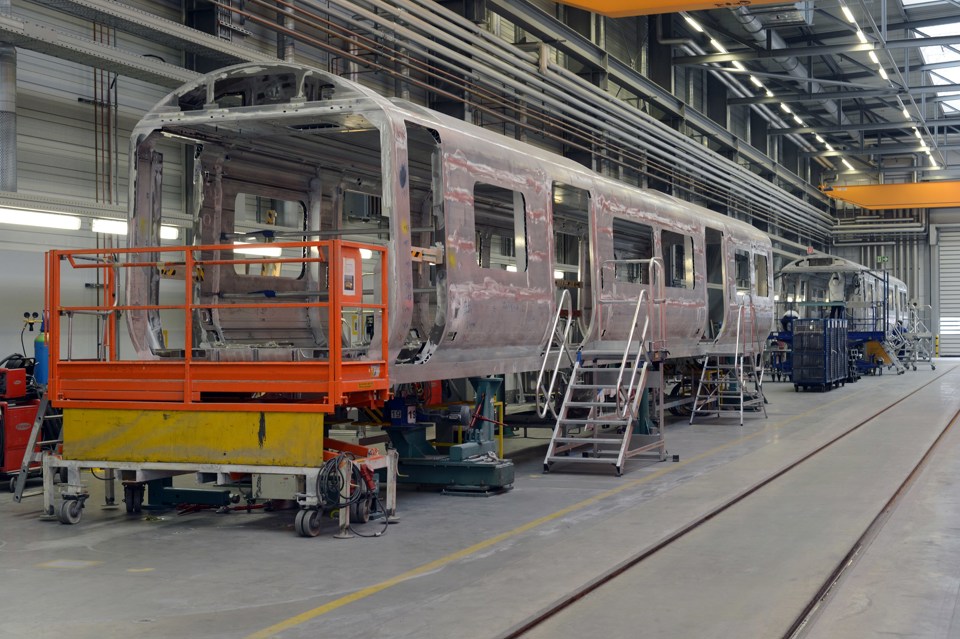
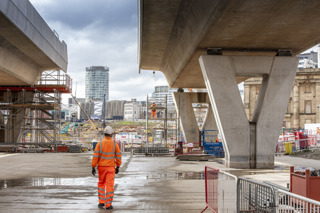
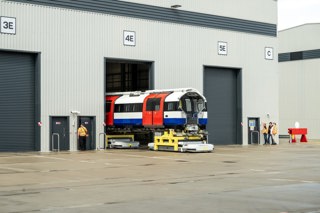
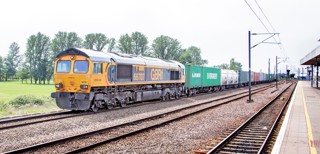
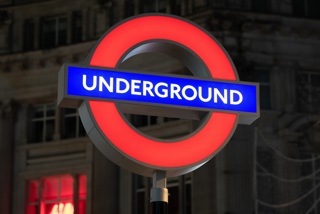



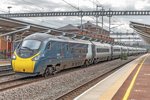








Login to comment
Comments
No comments have been made yet.